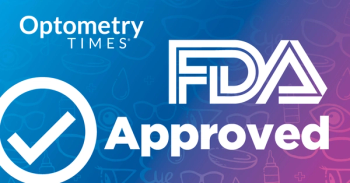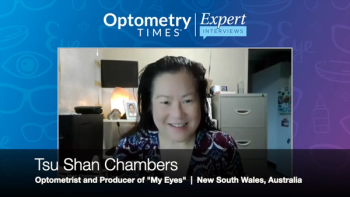
- March digital edition 2021
- Volume 13
- Issue 3
Think beyond anti-VEGF injections
Consider sleep apnea, congenital or acquired hemochromatosis, vitamin D deficiency, and diet
Anti-vascular endothelial growth factor (VEGF) injections have revolutionized eye care. They are used to treat a myriad of retinal conditions including exudative age-related macular degeneration (AMD), diabetic macular edema (DME), and diabetic retinopathy (DR). They are written into our macular degeneration and diabetic eye disease practice guidelines.1
Primary eye care practitioners should look at additional causes of retinal neovascularization when patients are diagnosed. The condition could be exacerbated by disorders like sleep apnea, congenital or acquired hemochromatosis, vitamin D deficiency, and low dietary xanthophylls/docosahexaenoic (DHA) fatty acids and polyphenols that facilitate protective macular pigment and bolster retinal health.
Sleep apnea
Obstructive sleep apnea (OSA) results in characteristic episodes of upper airway obstruction during sleep, increasing the risk of cardiovascular disease and stroke.
Findings from a study of 67,786 patients diagnosed with sleep apnea and a 2,684,111-reference cohort showed the risk of developing AMD following this diagnosis was significantly elevated, with an odds ratio of 1.44 (1.32-1.57).2 The epidemiologists of the study pointed out that obesity does not sufficiently explain this association. In a smaller study, treated OSA patients needed to double the number of bevacizumab (Avastin; Genentech) injections.3
Additionally, results from a study of 103 patients with neovascular AMD or diabetic macular edema showed that those who responded poorly to anti- VEGF therapy may have increased risk of OSA.4
The bottom line: OSA is a common disorder of the adult population.5 Patients with concurrent high-risk AMD and poor sleep duration or poor-quality sleep should be referred to a sleep medicine physician along with a retinal specialist.
Hemochromatosis
Hereditary hemochromatosis is a common genetic disorder that results in accumulation of iron beyond that required for biological function; acquired hemochromatosis results from excessive environmental or dietary accumulation of iron. Labile unbound iron is a potent generator of oxidative damage and oxidative stress.
Iron levels increase with age, accumulating within photoreceptors, retinal pigment epithelium, and drusen. When compared to age-matched controls, increased iron levels have the potential to exacerbate multiple age-related diseases.6 Accelerated AMD-like maculopathies develop in patients with retinal iron overload.7,8 There is a strong correlation (r=0.74) between the storage protein ferritin that is elevated in hereditary and acquired hemochromatosis and the concentrations of deoxyribonucleic acid damage/oxidative stress marker 8-hydroxy-2’-deoxyguanosine.9
The bottom line: Given that excess iron is toxic to the body, it is prudent to ask older men and post-menopausal women, especially those with advanced AMD, about their daily red meat consumption.
Vitamin D deficiency
There is growing evidence of the importance of 25-hydroxy vitamin D (25 OH) and progression to advanced AMD. A long-term study of 3965 eyes over 9.4 years showed a lower risk of progression to advanced AMD in the highest versus lowest quintile of dietary vitamin D intake after adjustment for demographic, behavioral, ocular, and nutritional factors.10
A meta-analysis provides evidence that high 25(OH)D concentrations may be protective against AMD and that 25OHD concentrations below 50 nmol/L (20 ng/ml) double the risk (odds ratio 2.18; 95% CI, 1.34-3.56) of late AMD.10 Circulating 25OHD level is an inexpensive and now-common lab measure of vitamin D systemic status and is approximately 15% lower in patients with AMD, compared with patients without AMD.11
The bottom line: In the era of pandemic lockdowns, expect nursing home patients to be at higher risk of vitamin D deficiency and AMD.
Diet
Any referral to a retinal specialist should be accompanied by advice concerning protection of the seemingly uninvolved or less-involved contralateral retina. Findings from the AREDS II study has proven the worth of dietary lutein/zeaxanthin.12 Yet the fovea is prime real estate where zeaxanthin isomers concentrate and occult neovascular membranes occur and re-occur.
Higher-dose zeaxanthin, marine DHA super polyunsaturated fatty acids, and resveratrol result in better outcomes in patients facing an advanced AMD diagnosis.6
The bottom line: Consider prescribing higher dose zeaxanthin isomer supplements, DHA rich fish oil, and a resveratrol supplement to most vulnerable patients with AMD.
References
1. Clinical practice guidelines. American Optometric Association. Accessed February 19, 2021. https://www.aoa.org/practice/clinical-guidelines/clinical-practice-guidelines?sso=y
2. Keenan TDL, Goldacre R, Goldacre MJ. Associations between obstructive sleep apnoea, primary open angle glaucoma and age-related macular degeneration: record linkage study. Br J Ophthalmol. 2017;101(2):155-159. doi: 10.1136/bjophthalmol-2015-308278
3. Schaal S, Sherman MP, Nesmith B, Barak Y. Untreated obstructive sleep apnea hinders response to bevacizumab in age-related macular degeneration. Retina. 2016;36(4):791-797. doi: 10.1097/ IAE.0000000000000981
4. Nesmith BLW, Ihnen M, Schaal S. Poor responders to bevacizumab pharmacotherapy in age-related macular degeneration and in diabetic macular edema demonstrate increased risk for obstructive sleep apnea. Retina. 2014;34(12):2423-2430. doi: 10.1097/IAE.0000000000000247
5. Rundo JV. Obstructive sleep apnea basics. Cleve Clin J Med. Sep;86(9 suppl 1):2-9. doi: 10.3949/ccjm.86.s1.02
6. Richer S, Ulanski L, Popenko NA, et al. AMD beyond AREDS II. In: Yanoff M, ed. Advances in Ophthalmology and Optometry. Elsevier Press; 2016:335-369.
7. Dunaief JL. Iron induced oxidative damage as a potential factor in age-related macular degeneration: the Cogan Lecture. Invest Ophthalmol Vis Sci. 2006;47(11):4660-4664. doi: 10.1167/iovs.06- 0568
8. Błasiak J, Skłodowska A, Ulińska M, Szaflik JP. Iron and age-related macular degeneration. Klin Oczna. 2009;111(4-6):174-177.
9. Kell DB. Towards a unifying, systems biology understanding of large-scale cellular death and destruction caused by poorly liganded iron: Parkinson’s, Huntington’s, Alzheimer’s, prions, bactericides, chemical toxicology and others as examples. Arch Toxicol. 2010;84(11):825-889. doi: 10.1007/s00204-010-0577-x
10. Merle BMJ, Silver RE, Rosner B, Seddon JM. Associations between vitamin D intake and progression to incident advanced age-related macular degeneration. Invest Ophthalmol Vis Sci. 2017;58(11):4569-4578. doi: 10.1167/iovs.17-21673
12. Age-Related Eye Disease Study 2 Research Group. Lutein + zeaxanthin and omega-3 fatty acids for age-related macular degeneration: the Age-Related Eye Disease Study 2 (AREDS2) randomized clinical trial. JAMA. 2013 May 15;309(19):2005-15. doi: 10.1001/jama.2013.4997
Articles in this issue
over 4 years ago
Vision rehabilitation of patients with traumatic brain injuryover 4 years ago
Know risks and benefits of ocular steroid useover 4 years ago
How to address dry eye in the challenging corneaover 4 years ago
New data in anterior segment laser surgeryover 4 years ago
Know 4 types of allergic eye diseaseover 4 years ago
New therapy addresses dry eye flaresover 4 years ago
COVID-19 & migraine: Patient impact & management tipsover 4 years ago
Quiz: New data in anterior segment laser surgeryover 4 years ago
How to prevent infection after LASIK or PRKNewsletter
Want more insights like this? Subscribe to Optometry Times and get clinical pearls and practice tips delivered straight to your inbox.













































.png)


